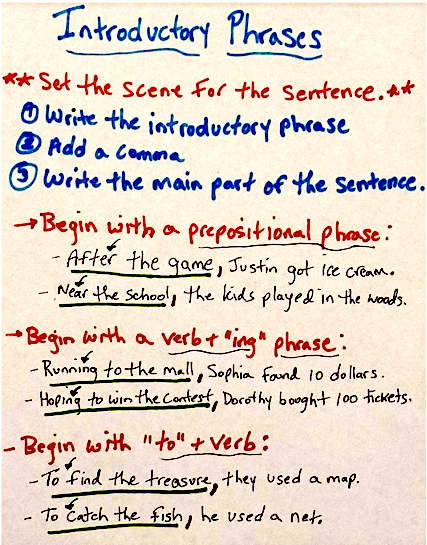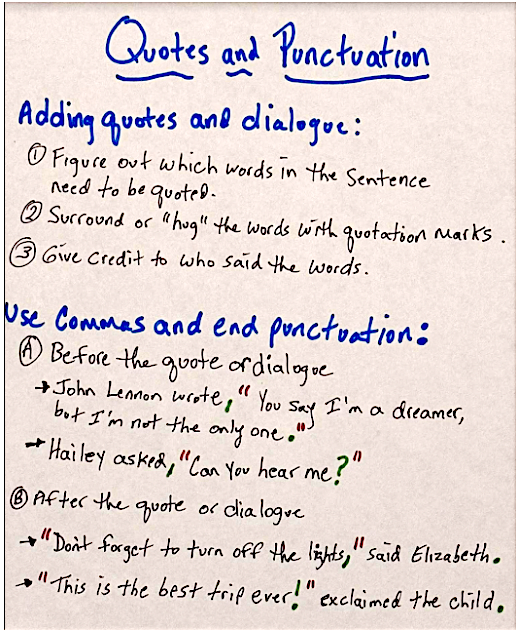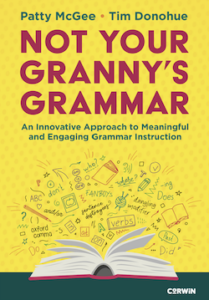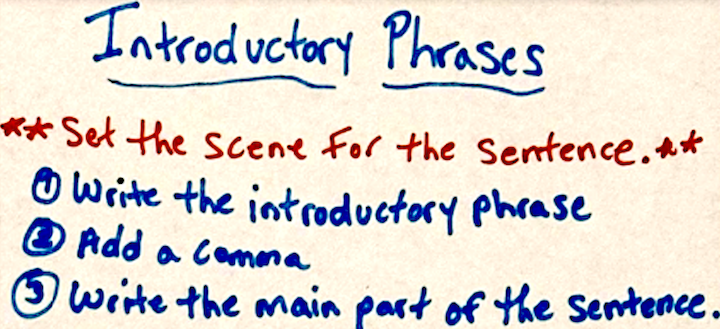By Patty McGee

 One of the biggest ELA conundrums is grammar usage. If we are teaching grammar, and students aren’t using it, why is that? We may never know for sure, but we can equip students with some support they’ll find truly helpful.
One of the biggest ELA conundrums is grammar usage. If we are teaching grammar, and students aren’t using it, why is that? We may never know for sure, but we can equip students with some support they’ll find truly helpful.
Let’s explore how anchor charts can transform grammar from a set of abstract rules into a practical toolkit that students actually want to use. These visual guides become trusted companions in the writing process, turning hesitant writers into confident communicators.
Here’s an example of a chart that is especially useful in the classroom:


This chart was created by Tim Donohue, grammar genius and co-author of our book Not Your Granny’s Grammar. There are some characteristics of this chart that make it especially useful.
1.There’s a description of the function of introductory phrases in “set the scene for the sentence.”
2. There are simple steps on how to use introductory phrases. Instead of saying, “use introductory phrases,” it includes a mini how-to that writers can follow.
3. There are examples of different types of phrases that can be used with sample sentences that show how they work.
Create Charts That Connect: Step-by-Step Guide
A teacher-created chart without student involvement has proven to be wholly ineffective. It is worth taking a slow meander through co-authoring a chart with students. Follow these steps for a few minutes over a few days. Let’s take it step by step because rushing never helped anyone learn grammar!
Step 1: Choose the focus
Pick one grammar concept to spotlight. Think small and specific – instead of tackling all of punctuation, maybe just focus on how to use commas in a series. It’s like teaching someone to cook – you start with scrambled eggs, not a five-course meal.
Step 2: Name the purpose
Write a friendly explanation of when and why to use this grammar move. Think of how you’d explain it to a friend over coffee. “These phrases help set up your sentence, like an invitation to read on.”
Step 3: Break it down
This part is clutch! Here’s where the magic happens – by creating simple, numbered steps. Grammar isn’t usually taught as a “how-to,” but that’s exactly what students need! Think cookbook instructions: clear, sequential, and impossible to mess up. This scene from Schitt’s Creek explains it all.
Step 4: Show, Don’t tell
Add a few carefully chosen examples. Highlight the important parts, just like you might use colored sticky notes in your favorite book. When students see real examples, they can think, “Oh, I could write something like that!”
Different Focus – Same Steps
Here’s a second example of an anchor chart with a different focus, created using the same steps.


Remember: Your chart doesn’t need to be perfect – it needs to be useful. Think of it as a friendly writing companion that grows alongside your students. When grammar feels like a helpful friend instead of a stern judge, that’s when grammar becomes craft.
Try It and Share!
Want to start creating your own charts? Give it a try. Think about what grammar concept your students are wrestling with right now. Follow the steps above. We would love to see what you co-create!

 Patty McGee is a veteran teacher and literacy educator. She is the author of Feedback that Moves Writers Forward (Corwin, 2017), Grammar Units of Study, and Writer’s Workshop Made Simple: 7 Essentials for Every Classroom & Every Writer (both Benchmark, 2021). Not Your Granny’s Grammar: An Innovative Approach to Meaningful and Engaging Grammar Instruction (Corwin, June 2025), written with Tom Donohue, focuses on reinvigorating grammar instruction.
Patty McGee is a veteran teacher and literacy educator. She is the author of Feedback that Moves Writers Forward (Corwin, 2017), Grammar Units of Study, and Writer’s Workshop Made Simple: 7 Essentials for Every Classroom & Every Writer (both Benchmark, 2021). Not Your Granny’s Grammar: An Innovative Approach to Meaningful and Engaging Grammar Instruction (Corwin, June 2025), written with Tom Donohue, focuses on reinvigorating grammar instruction.
Patty regularly consults with teachers and principals in Grades K-12 on literacy instruction. Her favorite moments are in the classroom with both educators and students. A former classroom teacher, media specialist, and staff developer, she was a 2002 recipient of the prestigious Milken Award for Excellence in Education. Read her other MiddleWeb articles and follow her at Bluesky and LinkedIn. Visit her website at www.pattymcgee.org and download her free strategy bank for writing instruction,









